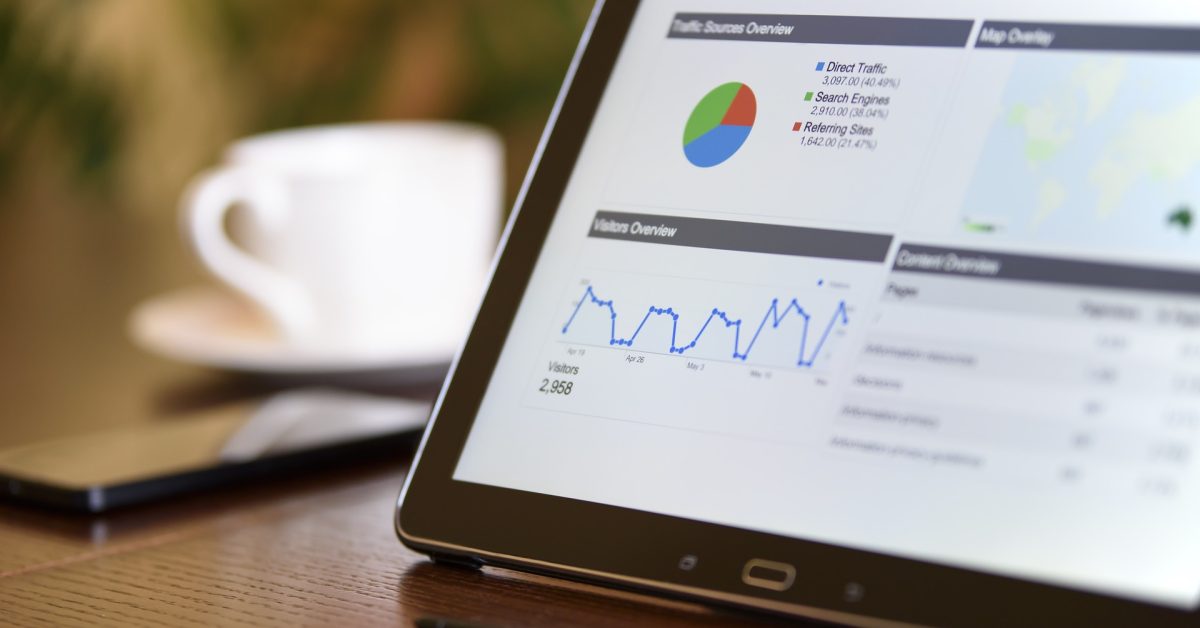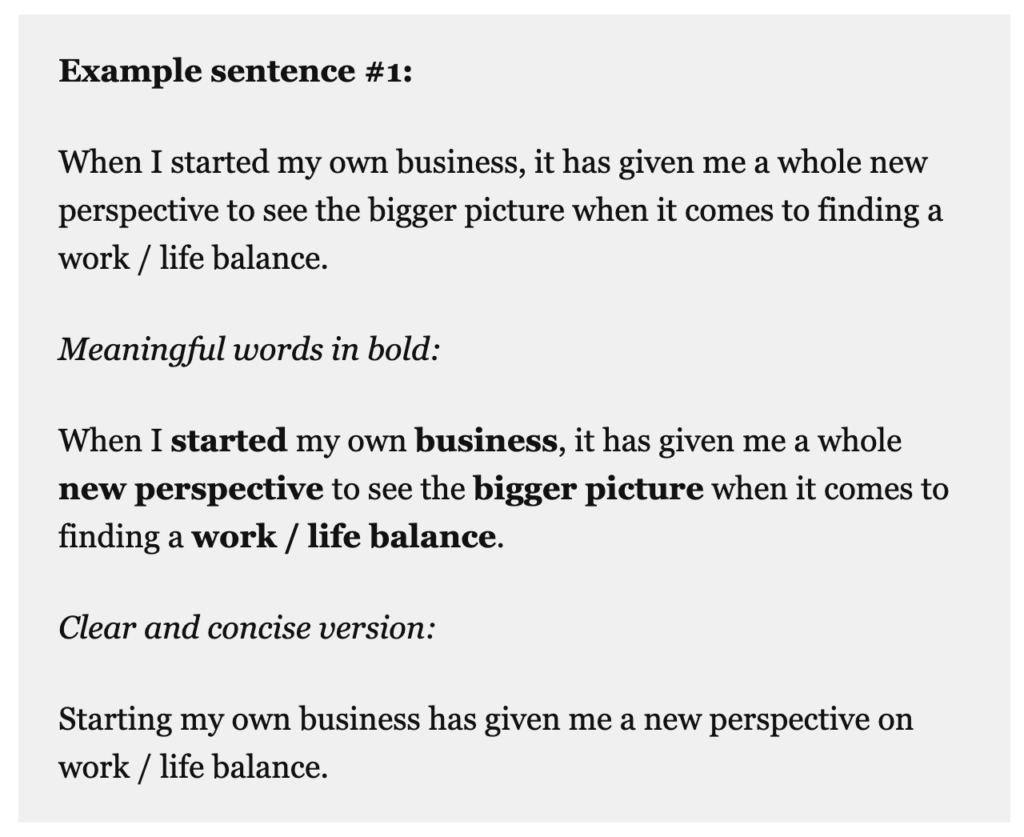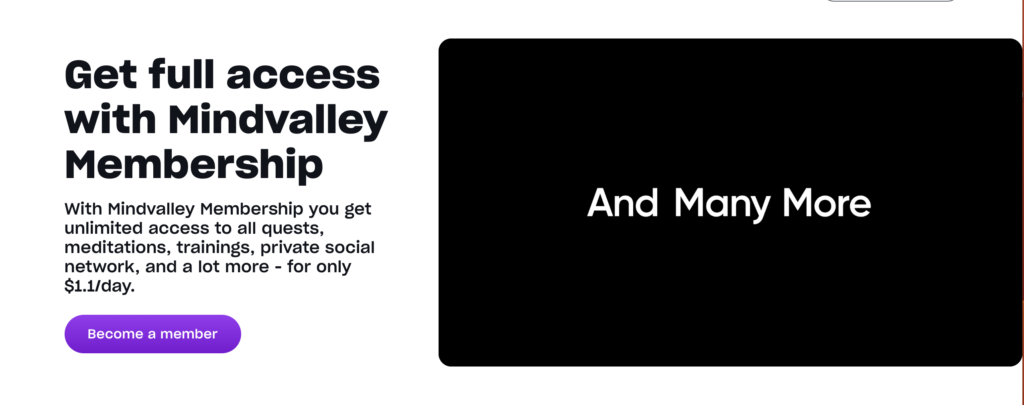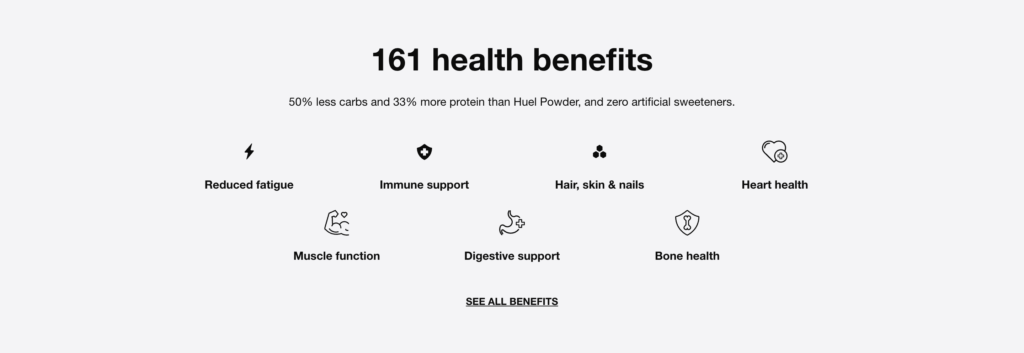Conversion Rate Optimization – How to Leverage Copywriting to Skyrocket Sales?

As a business owner, the ultimate goal is to drive sales, increase revenue, and help as many people as possible. Unfortunately, that is easier said than done. But what if I told you Conversion Rate Optimization is the bridge between you and achieving your goals?
If you struggle with converting your visitors into buying customers? In this article, you’ll get your hands on 12 proven and tested tips to skyrocket your conversion rate from an average (2.35% or lower) to a top-tier converting website (11.45% and higher).
In addition, we’ll walk through some best practices to get more conversions and talk about how to test their effectiveness. Let’s get on an adventure together to master the craft of Conversion Rate Optimization.
What is Conversion Rate Optimization in digital marketing?
Let’s start with the basics. According to Optimizely, “Conversion rate optimization (CRO) is the process of increasing the percentage of conversions from a website or mobile app.”
This process typically involves generating ideas for elements on your site or app that can be improved and then validating those hypotheses through A/B testing and multivariate testing.
That leads us to the big juicy question of today: How do you write copy for conversions? (more on the exact steps how later)
The thing you should know first is that CRO copywriting is a valuable tool that marketers use to reach their audience—so they can do awesome things for them. The ultimate goal of conversion rate optimization copywriting is to persuade a potential customer to do something (convert).
Why is conversion rate optimization important?
Conversion rate optimization is important because it allows you to lower your customer acquisition costs by getting more value from the visitors and users you already have. By optimizing your conversion rate you can increase revenue per visitor, acquire more customers, and grow your business.
For example, if a landing page has a conversion rate of 10% and receives 2000 visitors a month, then the page will generate 200 conversions per month. Let’s say you improve this landing page, you:
- Improving headline structure of your landing page
- Optimize the structure
- Make sure the landing page has a CTA at the bottom
- Ad extra social proof
The conversion rate can be improved to 15%, this might sound low but in reality, the number of conversions generated jumps by to 300 per month. That’s a boost of 50% of the old 200 conversions!
To conclude this part, there is always room for improvement when it comes to increasing conversions, and the best companies are constantly iterating and improving their sites and apps to create a better experience for their users and grow conversions.
12 Conversion Rate Optimization copywriting tips
You’re always learning about your audience and new audience segments may pop up over time. That’s why you A/B test and optimize the six elements of your Value Proposition we just talked about.
But how do you improve those elements based on those tests to increase your conversions?
Figuring out what’s wrong is the first part. Making things better is the second and most important part.
1. Keep copy clear and concise
Readers and audiences treasure concise writing, A clean, concise message is the core of CRO copywriting. Concise sentences and paragraphs grip your reader’s attention and help them focus on your main point.
“73% of people admit to skimming rather than reading a blog post.”—HubSpot
More concise writing will also help you, the writer, organize your ideas and streamline your overall writing process. Works of creative writing, persuasive writing, business writing, and academic writing are all elevated by clear writing that is free from wordiness and distended sentence structure.

Source: Clear and Concise writing example
Use these two tips to write clear and concise:
Write in the active voice.
Writing in an active voice makes your ad copy more engaging and makes it clear what action you want people to take. Speak to the customer like you’re chatting with them. Use active voice (that’s when you put the subject first and get rid of participles (words that end in ed, en, ing, ly, ion, etc.) and prepositions (by, with, at, of etc.).
For example, “Get our new product now” is written in active voice and clearly communicates the action you want people to take.
Sometimes you need to write a passive sentence to accurately describe a situation, but generally, the active voice is more direct. Choose active verbs when given the chance.
Keep it stupid simple
Did you know that the average American reads at grade 7 or 8 level? That means you should use simple words you and your readers can fully understand.
So, dumb down your words and use short sentences. Refrain from using extra words, long words, unnecessary phrases, and contrived chapters may boost word count, but they won’t improve your writing.
2. Optimize your headline
Since the headline of an article is one of the key things that readers look at when reading or sharing an article, optimizing the headline can result in significant boosts in readership and other metrics. The goal of a good headline is to sell your article or other piece of content to potential readers or a specific target audience.
There are many steps you can follow to craft a compelling headline:
- Summarize the subject matter by boiling your narrative down to its most basic point. Then incorporate that into your headline, so potential readers want to read on for additional details.
- Use a hook and open a loop. The purpose of a hook sentence (or header) is to grab attention and intrigue the reader, keeping them reading until they reach the end, without giving away the most exciting part.
- Proofread and fact-check. Always proofread your headlines to catch any typos, missing words, punctuation marks in the wrong place, or incorrect word usage. If you use statistics or counts, ensure that you are providing the most accurate information by fact checking your information.
Headline Testing
The steps given above are incredibly important in creating captivating and persuasive headlines. But you never know what works and what doesn’t. That’s why it is vital to develop multiple title variations (more about headline variations later) for an article or piece of social media, which then can be tested on multiple audience segments to determine which one performs the best.
Did you know that viral media sites such as Upworthy test as many as 25 headlines per article? In order to display the headline variants simultaneously to website visitors, an A/B testing tool is used to split the traffic that reaches a website and display the different variations of the headline.
The A/B testing platform will gather data from the test, and declare a winner once a sufficient number of people have viewed the test for the results to be statistically significant.
Once the headline test has determined a winner, 100% of the traffic can then be directed at the winning variation.
3. Use a Killing Headline Structure
In most cases, a proper headline structure has 3 parts:
- Hook: The main headline that communicates a benefit, pain point, emotion, result or interesting fact.
- Line: A sub-headline that clearly communicates a unique solution to a specific problem.
- Call to Action: Button to sign up

You need to put effort into writing your headlines, especially if you sell top-shelf products or premium services. Here’s why
A good landing page headline:
-
- Instantly grabs the users’ attention;
-
- Sparks curiosity;
-
- helps your on-page SEO;
-
- Clearly communicates your offers USP (Unique Selling Point)
The most beautiful thing about great headlines is that they don’t cost you a cent. However, a headline determines how much you can earn from your campaigns.
In some situations, just a headline with a Call to Action can be enough to spread the message. Here’s how Clever Finance just use a single headline + CTA:

4. Personalize Your Call to Action
If you manage to capture the attention of your audience, then you have a limited time to utilize this opportunity. That’s why you have only one intensely short moment to convert this attention into a specific action.
That’s why unlike standard Call to Actions, personalized Call to Actions are perfect as they are tailored per individual. No wonder that personalization is considered one of the quickest ways to trigger emotions, and emotions ultimately drive people to make purchases.
The numbers confirm that a personalized call to action is the perfect tool as they perform 202% better than non-personalized CTAs.
5. Whitespace
Don’t group giant blocks of text together. Visitors don’t want to read. So not only do you need to chop your copy right down to the golden nuggets, you also have to wrap those nuggets in a ton of whitespace to make what’s left easy to read.
White space design is the empty (white) space between content (text, graphics, figures, etc). It can also be referred to as negative space. And it makes copy skimmable and skimmable copy gets read. And that’s important since you’re going for a conversion, not a dissertation.
Here you can see that the whitespace between the text is actually just as important as the copy/text itself. That’s why you shouldn’t forget to do this properly.
So with that out of the way, let’s talk about one of the core design principles, white space design.
6. Use Powerwords in your copy to evoke emotions
What if I told you that power words are like a “cheat code” for boosting conversion rates? If you want to be able to elicit a strong response from your audience as a result of their enthusiasm. Then you should use power words in your CTA right now!
Let’s work with a simple example, instead of the dry and boring ‘buy now’, use ‘Skyrocket Your X With 10% Off’. In this case, skyrocket is an example of a powerword that evokes emotion.
If you only sprinkle in a single one into your CTA you will be able to boost your conversion rate. And on the other hand you transform your dry and lifeless call to action into a masterpiece that evoke strong emotions and catches attention instantly.
Fun fact: Did you know that power words can boost your conversion with 12.7%?
Examples of power words include “limited time,” “exclusive,” “proven,”, “amazing”, and “free.” (Source OptinMonster)
This is how you excite your audience with these words by making your CTA pop, and gives it a little extra kick.
7. Use customer reviews as your #1 Salesperson:
Did you know 93% of customers will read reviews of local businesses to determine their quality? But if you think you can only rely on positive reviews, then you are wrong.
The importance of customer reviews cannot be overstated. Both positive and negative customer reviews influence the way we sell. Here’s why:
- 72% of customers won’t take any buying actions until they’ve read reviews.
- For every one-star increase that a business gets on Yelp, they see a 5-9% increase in revenue.
- 54% of consumers visit a local business website after reading a positive review.
- 95% of customers get suspicious of a rating if there are no negative reviews.
If you want a fast and easy way for conversion rate optimization? Gather customer testimonials and reviews and display them on your website.
8. Use lists (Bullet Points)
Bullet points are a great way to break paragraphs into skimmable copy that’s less intimidating to read than a chunk of words. And that’s all there is to say about that.
The effective use of bullet points in business writing can help highlight important information, direct the reader to themed lists, and improve a document’s overall readability. These simple tips provide a guide for using bullet points successfully in business writing.
The purpose of bullet points:
- Draws attention to important information
- Improves the ability of the reader to scan information easily
- Communicates information efficiently
Especially in product descriptions bullet points work incredibly well. For example Huel:

There are a lot of different ways how to use bullet points. In order for you to write good bullet points, keep the following things in mind:
-
- Keep bullet pointed information short; each element in the list should be no more than two lines in length.
-
- Use parallel form when constructing bulleted lists. For example, use the same part of speech to begin each bullet.
-
- Make all bullet points approximately the same length and ensure that the format is consistent within each list.
-
- Use a strong heading to group related items together.
-
- Use the same font and margin width for each bullet point.
-
- Use periods at the end of each line only if they are complete sentences.
9. Add and statistics and statements from ‘experts’
Statements backed up by numerical proof add credibility and authority.
Experts with credentials or celebrities with cultural and social capital automatically garner more authority and legitimacy. Their words simply hold more weight and credibility.
For example
Academic titles like Ph.D., Professor, etc. helps in certain fields that require extensive knowledge, such as medical doctors and scientists.
The expert behind these principles of persuasion, Dr. Robert Cialdini, is a fine example.
Those who read about him for the first time would instantly perceive him as someone with extensive academic knowledge and credibility in psychology, even without knowing what he wrote about.
Science is another huge commander of authority. Authority can be gained by putting out quality content in your niche and contributing to industry magazines for exposure.
The same is for numbers and statistics because statistics like this show your users that you’ve got a lot of experience under your belt or that your product is doing an awesome job. Use numbers to convince your visitors to convert.
Also, you can try testing a specific number vs an estimated number. For example “over 100,000 users” vs. “101,395 users.” Or “over 80% of users” vs “88% of users.”
Because specificity is more persuasive than rough estimates, more about this right now!
10. The power of Specificity
If you use the power of specificity wisely (and ethically), then it is one of the strongest copywriting tools out there. Done correctly, this superpower can punch life into your writing. Which will lead to bigger conversions and separate you from your competition.
Specificity means simply adding more details to your writing. Rather than adding adjectives like “important” or “triple” – add a specific number or amount to increase the authenticity and believability.
Details seem more concrete, while general claims come off salesy. Specifics like numbers, dates, material names, or percentages eliminate such an approach. This approach will eventually lead to more people trusting you, which leads to more conversions.
Here are some quick tips to make your copy more specific:
-
- Use exact percentage to claim the results you’re offering (56% or 13,52%)
-
- Inform people what returns to expect in numbers
-
- Always back claims up with statistics and case studies
-
- Use testimonials, tagged content, and social account buttons to back claims
Now – let’s see the power of specificity in action:
Vague: Double Your Website Visitors Using The Following Proven And Tested Tips
Specific: Use These 3 Proven And Tested Tips To Get 52% More website visitors.
11. Create a sense of urgency
These are actually one of my favorite tactics when it comes to a successful CTA. This is the art of persuasion through some intriguing psychological triggers:
-
- FOMO (Fear Of Missing Out) – FOMO is an extremely effective motivator because it makes people think they might lose out on an amazing opportunity that might not come around again. This can be the final push to get them over the edge.
-
- Scarcity – Supply and demand is a classic way to peak demand in your customer. What do you feel if you see a product you really need online, but there are only 2 days left to buy?
Even though this concept sounds almost too simple, there is a catch. Because you probably get these types of email all the time, I know I sure do. Think of messaging like: “Shop today! Sale ends on Monday,”
12. A/B Testing for better results
Throwing a dart is fun. But if you could create a system that helps you determine to throw the best dart ever (every single time). This means knowing to throw better, at what speed, over what distance, under what lighting, and against what board—will make you a better dart player.
This is the exact same situation in digital marketing. Rather than throwing darts on a board, you are testing pieces of content with A/B split testing.
A/B testing (also known as split testing or bucket testing) is a methodology for comparing two versions of a webpage or app against each other to determine which one performs better.
Source: Optimizely
Now simply translated, A/B testing is experimenting with two or more variations of a piece of work to determine which variation performs better. Examples are subject lines, emails, and part of pages.
The aim is to determine what works the best and that piece of content will be distributed to the rest of the audience. Which will in the end help you skyrocket your conversion rate.
3 Proven and Tested Copywriting Conversion Rate Optimization Strategies
Here are some applicable conversion rate optimization marketing strategies to test and implement in your online business:
1. Utilize text-based CTAs within your blog posts.
Your blog can be one of the most effective content marketing strategies that you have, but it will only have a chance at being effective if you use a call-to-action (CTA). But they sometimes fail to entice visitors to take your desired course of action.
Why? According to Hubspot, banner blindness is a real phenomenon related to people becoming accustomed to ignoring banner-like information on websites. This lack of attention coupled with the fact site visitors don’t always read all the way to the bottom of a blog post (rather, they “snack” on content), means a different approach is required.
That’s where the text-based CTA comes in handy. They did a limited test of 10 blog posts, to see if they would convert more traffic into leads than regular CTAs located at the bottom of a web page.
In the end they discovered that regular end-of-post banner CTAs contributed an average of just 6% of leads that the blog posts generated, whereas up to 93% of a post’s leads came from the anchor-text CTA alone.
The lesson is, weave CTA texts into your blog to increase the conversion rate in a subtle manner.
2. Add messages to high-converting web pages.
To increase conversions, add these messaging features to your high-performing web pages — such as your pricing and product pages — so leads get the information they want in real-time.
Use live chat software to chat with your website visitors in real-time and offer support and guidance as needed. You can also make your messaging and chatbots action-based.
This simple feature will give you that competitive edge and help you convert more.
3. Optimize high-performing blog posts.
Again, publishing blog articles opens the door to a big opportunity for conversions. Even more so if you already have existing blog content on your site — in fact, at HubSpot, the majority of our monthly blog views and leads come from posts published over a month ago.
To get started optimizing your blog content, identify your posts with the highest levels of web traffic but low conversion rates. (Possible causes of this issue may be related to SEO, the content offer you are promoting, or your CTA.)
The goal is to drive more qualified website traffic to those posts and you can do so by optimizing the content for the search engine results page (SERP) or updating it as needed to ensure it’s fresh and relevant.
BONUS: Conversion Rate Optimization 5-Step Checklist
In the world of digital marketing, a CRO best practice is a commonly-held belief that a particular optimization action will guarantee an increase in conversion rate. But without using the following checklist, you won’t get there:
- Use a strong color for all CTA (call-to-action) buttons
- Place CTAs above the fold
- Use urgency (e.g., time-limited offers) to drive sales
- Always display testimonials
- Use fewer form fields on your forms
Get Started With Conversion Rate Optimization Now
Copywriting is a critical aspect of your business and by conversion rate optimization you can make a huge impact on your results. By following these tips, you can write copy that connects with your target audience and it skyrockets your sales.
But if you want to succeed in the long term, what leads to growth is not blindly applying best practices that you see on other blogs or hear from your boss(es). The #1 strategy to winning is investing in understanding and learning from your users and using the insight to build an optimization strategy that continuously improves your business.
So remember to keep testing and refining your copy to continuously improve your results. With a strong focus on copywriting, you can take your business to the next level.

Let's connect!
I look forward to learn about your story. Book a 15 min impact call and get extreme clarity on how to overcome your biggest online challenges.